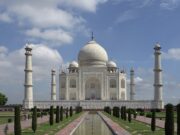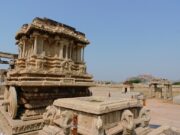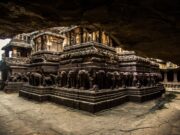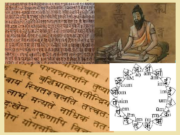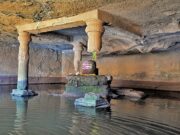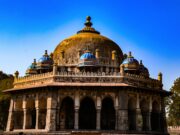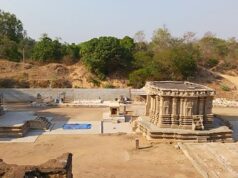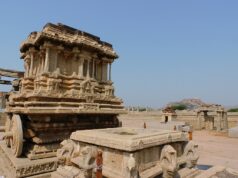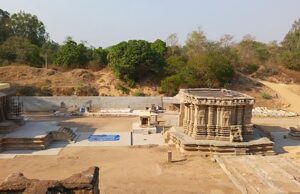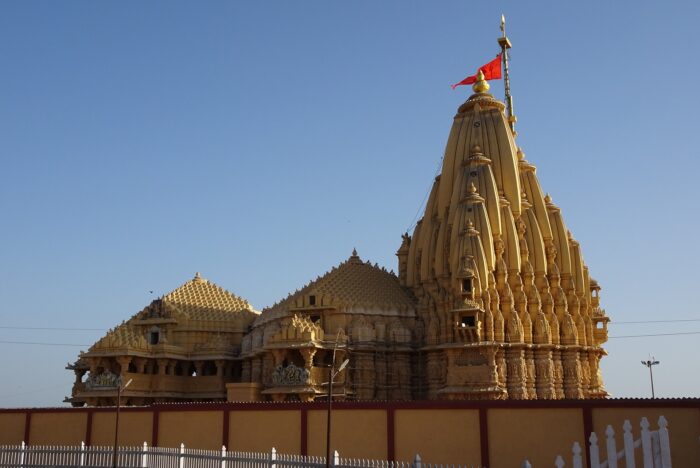
India has a higher percentage of people who believe in God. There are almost 2 million temples in India, and there are no villages or cities without temples. Some of these temples have a long and illustrious history. However, only a few people are aware of this. So now we’re going to talk about Lord Shiva’s Temple in Gujrat.
The Somnath temple, popularly known as Deo Patan, is located in Verbal, Gujarat. Somnath is a Sanskrit word that means “Lord of the Moon.” Out of the 12 Jyotirlingas, Somnath temple is believed to be the first. The Jyotirlinga is Lord Shiva’s celestial dwelling place, where he used to reside in many forms. The word ‘Jyoti’ means ‘light’ or ‘radiance,’ and the word ‘Linga’ means ‘signs.’ So Jyotirlinga signifies ‘Lord Shiva’s Radiance Sign.’ The Rigveda, Shreemad Bhagavat, and Shivpuran all reference Somnath Temple.
HISTORY OF SOMNATH TEMPLE
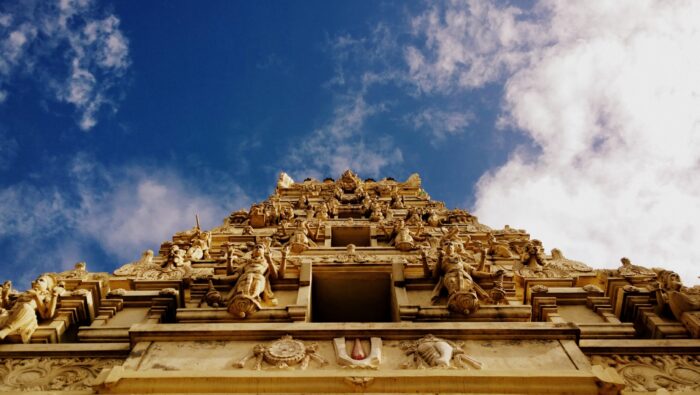
The Somnath temple is reported to have been demolished and rebuilt several times. This temple, which stands on the Arabian Sea is so gorgeous to see that it is easy to be seduced. Perhaps this is why it attracts all the kings, who he looted. This could possibly be due to the fact that it is the first Jyotirlinga.
This Temple was originally constructed of gold by the Moon God in the Satya Yuga, then rebuilt in silver by Ravana in the Treta Yuga, and finally constructed of sandalwood by Lord Krishna in the Dwapara Yuga.
The invaders have repeatedly damaged and looted the Somnath Temple. According to ancient chronicles, the Yadav monarchs rebuilt the temple, but the Arab governor of Sindh demolished it. In 1024, Mahmud of Ghazni attacked and demolished this temple in an erroneous manner. This temple was attacked 17 times in total. He plundered all of the gold from the Somnath temple and then set fire to it. He also assassinated 50,000 worshipers who were defending the temple. Afzal Khan, Khilji’s leader in 1296, Muzaffar Shah in 1375, and Aurangzeb in 1665 followed Ghazni. By 1702, Aurangzeb had made it a point that no devotee should worship anywhere.
This temple has been reconstructed 17 times in all. In 1947, India’s former deputy Prime Minister Sardar Vallabhbhai Patel built the current temple. Rajendra Prasad was the first to open it in 1951.
MYTHOLOGY
The Lord of the Moon, according to scriptures, built the Somnath Temple. Lord Moon was married to Daksha Prajapati’s 27 daughters. However, he just cared about Rohini and ignored the rest. Daksha Prajapati was irritated that her other daughters were being overlooked. As a result, he attempted to persuade Lord Moon. However, he paid little attention to Daksha Prajapati. He cursed the moon after seeing his daughter’s fear, saying that he would gradually lose his lightness and light. Lord moon arrived at Prabhasa after gradually losing light and worshipping Somnath’s linga. Lord Shiva appeared and said that he would gradually restore his brightness and lightness after seeing Lord Moon’s dedication. And he claimed his light would increase for 15 days before progressively decreasing after that. His light is fully lighted on full moon nights.
ARCHITECTURE
The current Somnath edifice is designed in the Chalukyan style and stands 155 feet tall with a 27-foot tall flag post and seven stories. No section of the land can be seen from the sea coast to Antarctica because of the temple’s design. Grabha Griha, Sabha Mandap, and Nritha Mandap are the three principal components of the Temple. Grabha Griha is where Jyothirlingam is enshrined.



